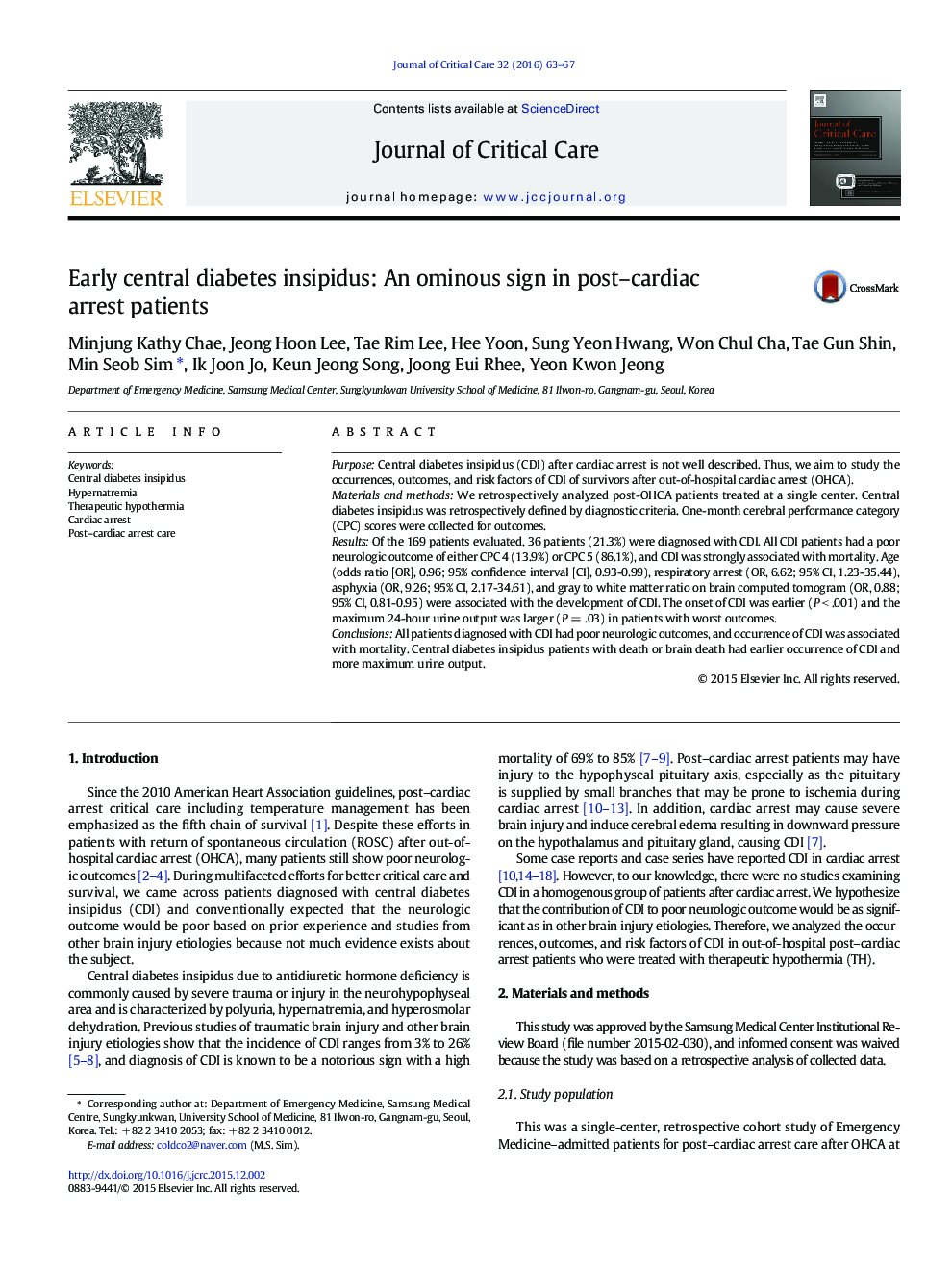| Article ID | Journal | Published Year | Pages | File Type |
|---|---|---|---|---|
| 2764476 | Journal of Critical Care | 2016 | 5 Pages |
PurposeCentral diabetes insipidus (CDI) after cardiac arrest is not well described. Thus, we aim to study the occurrences, outcomes, and risk factors of CDI of survivors after out-of-hospital cardiac arrest (OHCA).Materials and methodsWe retrospectively analyzed post-OHCA patients treated at a single center. Central diabetes insipidus was retrospectively defined by diagnostic criteria. One-month cerebral performance category (CPC) scores were collected for outcomes.ResultsOf the 169 patients evaluated, 36 patients (21.3%) were diagnosed with CDI. All CDI patients had a poor neurologic outcome of either CPC 4 (13.9%) or CPC 5 (86.1%), and CDI was strongly associated with mortality. Age (odds ratio [OR], 0.96; 95% confidence interval [CI], 0.93-0.99), respiratory arrest (OR, 6.62; 95% CI, 1.23-35.44), asphyxia (OR, 9.26; 95% CI, 2.17-34.61), and gray to white matter ratio on brain computed tomogram (OR, 0.88; 95% CI, 0.81-0.95) were associated with the development of CDI. The onset of CDI was earlier (P < .001) and the maximum 24-hour urine output was larger (P = .03) in patients with worst outcomes.ConclusionsAll patients diagnosed with CDI had poor neurologic outcomes, and occurrence of CDI was associated with mortality. Central diabetes insipidus patients with death or brain death had earlier occurrence of CDI and more maximum urine output.
